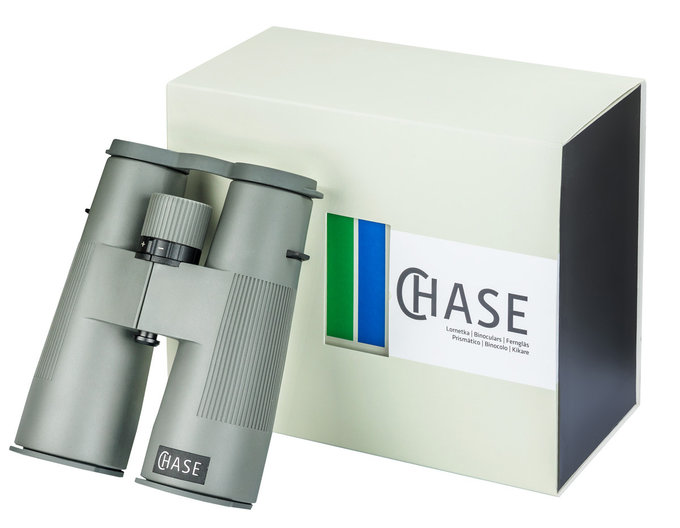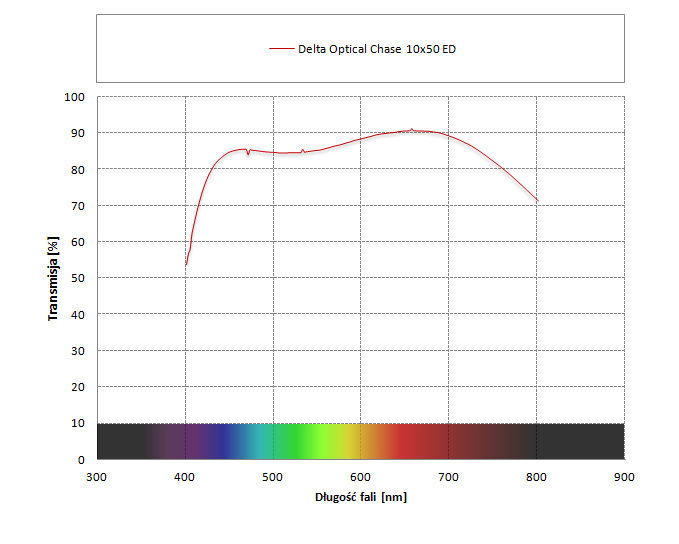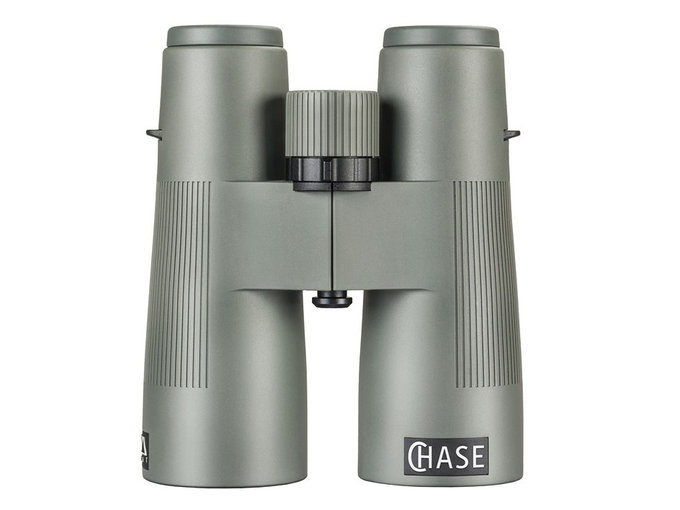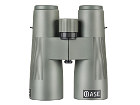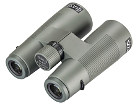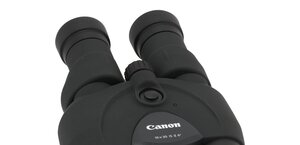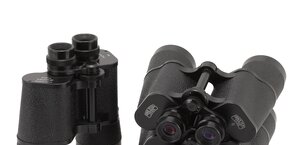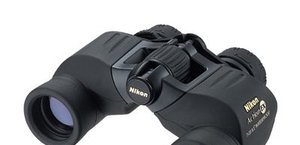In March 2017 the Polish Delta Optical company announced a launch of a new series of binoculars called the Chase ED. It was supposed to consist of four models with the following parameters: the 8×42, the 10×42, the 10×50 and the 12×50.
All binoculars are Schmidt-Pechan constructions with the silver-covered reflection layer. The producer doesn’t mention any phase-correction coatings. All air-to-glass surfaces are coated by antireflection multilayer coatings and you can find ED glass in the objective lenses.
The casings of the binoculars are compact, equipped with the internal focusing and dioptre correction mechanism so completely waterproof. They are also nitrogen-purged.
Buyers get a case, a clearing cloth for optics and caps for objectives and eyepieces. The product comes with 10-year guarantee period.
Distribution / Sales:
Delta Optical
web site
| Magnification |
Lens diameter |
Angular field of view |
Prisms |
Eye relief |
Weight |
Price |
| 10 |
50 |
109/1000(6.2o) |
BaK-4/roof |
16 mm |
890 g |
1290 PLN |
|
|
| Real front lens diameter |
Left: 49.31+/-
0.05 mm
Right: 49.33+/-
0.05 mm
|
5 / 8.0 pkt |
| Real magnification |
9.67+/-
0.1x
|
3/3.0 |
| Transmission |
85.3+/-
1%
|
13/25.0 |
| Chromatic aberration |
Slight in the centre, near medium on the edges. |
6.8/10.0 |
| Astigmatism |
Slight. |
7/10.0 |
| Distortion |
Distance between the first curved line and the field centre compared to the field of view radius : 46% +\- 4% |
5/10.0 |
| Coma |
Appears far from the centre, in a distance of 60-65% of the field of view radius and is high on the edge. |
4.7/10.0 |
| Blurring at the edge of the FOV |
Blur occurs in a distance of 73% ± 3% from the field of view centre. |
4/10.0 |
| Darkening at the edge the FOV |
Low. |
4.2/5.0 |
| Whiteness of the image |
A bit more of red light. For shorter wavelengths the graph his quite flat. |
4.2/5.0 |
| Collimation |
Perfect. |
5/5.0 |
| Internal reflections |
| Left: |
Right:
|
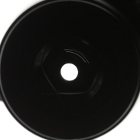 |
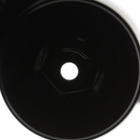 |
Very nice and dark areas around pupils.
|
4/5.0 |
| Housing |
Very shapely and stylish, with good quality rubber armour although perhaps a tad too slippery. The rubber sticks to the body of the binoculars very well although it is a bit looser near the objective lenses. Slight rubberized eyecups with three stops. Produced in China. |
7.2/8.0 |
| Focusing |
Significant, ribbed central wheel which works properly well; its full range amounts to as much as 920 degrees so there’s a lot of turning. The joystick next to the central wheel for dioptre correction. Nothing moves outside – a rare feature at this price point. |
5/5.0 |
| Tripod |
There’s a comfortable exit. |
3/3.0 |
| Interpupilary distance |
from 58.1 to 75.7mm
|
5/6.0 |
| Closest focusing distance |
2.8 metra. |
2/2.0 |
| Eyepieces FOV |
Apparent field of view of 61.1 deg (according to simple formula) and 56.2 deg (according to tangent formula) |
11.5/20.0 |
| Field of view |
Measured by us amounted to 6.32 ± 0.04 degrees and it was even a tad wider than stated in official specifications. A sensible field for this class of equipment. |
6.5/8.0 |
| Quality of the interior of the barrels |
Nicely darkened, matted and ribbed tubes. A wide bottom, black near the prisms, the smaller cornet gray. Isolated specks of dust on prisms. |
4.5/5.0 |
| Vignetting |
| Left: |
Right:
|
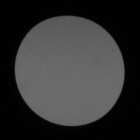 |
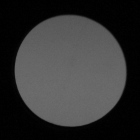 |
OL: 4.68%, OR: 1.58% |
4.5/8.0 |
| Prisms quality |
Good quality BaK-4. |
8/8.0 |
| Antireflection coatings |
Green-yellow on objective lenses, green-blue on the prisms, green-yellow on eyepieces. Medium intensity. |
4.5/5.0 |
| Warranty [years] |
10 |
4.5/6.0 |
| Final result |
69.5%
|
132.1 / 190 pkt
|
| Econo result |
|
0pkt. |
Summary
Pros:
- shapely and very stylish casing,
- lack of any serious chromatic aberration problems,
- moderate astigmatism,
- good rendering of colours,
- negligible brightness loss on the edge of the field of view,
- very nice, dark areas around exit pupils,
- proper blackening and cleanliness inside tubes,
- prisms made of BaK-4 glass,
- internal focusing and dioptre correction,
- good quality antireflection coatings.
Cons:
- truncated exit pupils,
- sharpness on the edge of the field should have been better,
- high coma on the edge of the field of view.
The Chase 10x50 ED fared in our test a bit weaker than its smaller 10x42 brother. It is mainly due to a worse correction of the edge of the field of view which is blurrier and experiences more serious coma problems. In other categories the results of both these binoculars are similar and the transmission graph, presented above, is very much like the graph of the Chase 10x42 ED model.
The main difference is a slightly emphasized dip in the centre of the visible spectrum. It doesn’t result in noticeable differences in colour rendering but, overall, because of that the graph is on a bit higher level. The averaged-out transmission of the 10x50 model in the centre of the visible spectrum reaches 85% and is just a tad higher than in the case of the 10x42. It is a very decent result if you take into account the fact that you deal with a roof prism model which costs around 300 Euro. In the red part of the spectrum its results are even able to exceed 90%.
The overall overtone of this test is going to be similar to that of the 10x42 model. For a quite moderate sum 300 Euro you get a very nice, stylish pair of binoculars of good quality with universal 10x50 parameters and a quite sensible field of view. The field is not corrected in a perfect way but it would be a foolish thing to expect at such a price point. Still the Delta Optical Chase 10x50 ED deals with many aberrations just fine or even very well and it’s enough to consider it a well-done instrument. I think you won’t regret the purchase if you decide to buy it.

